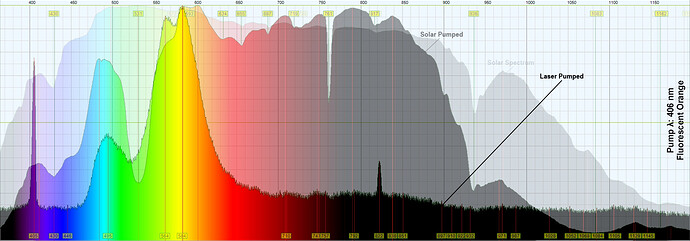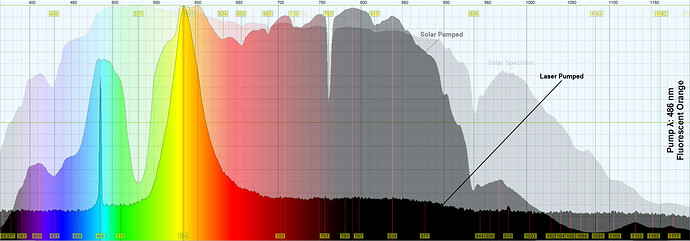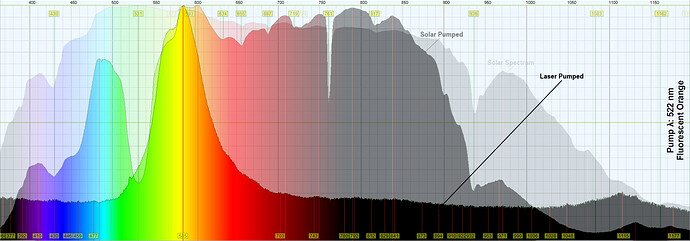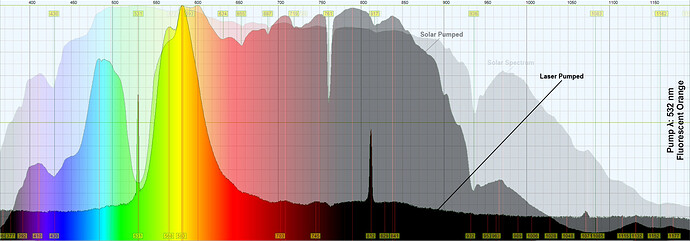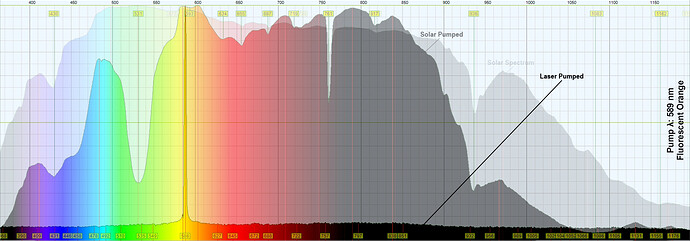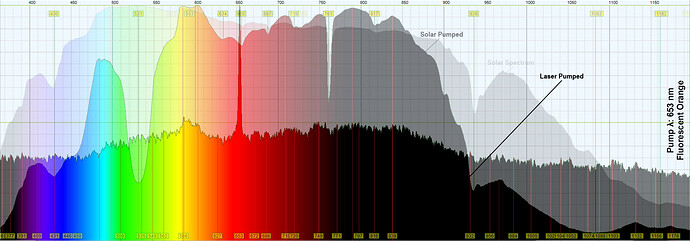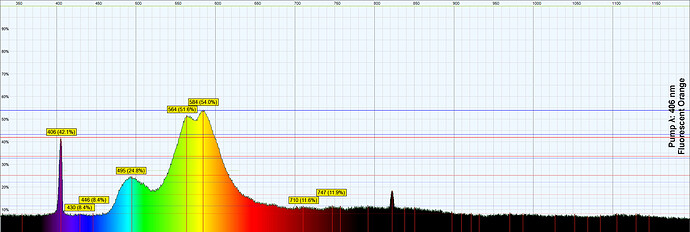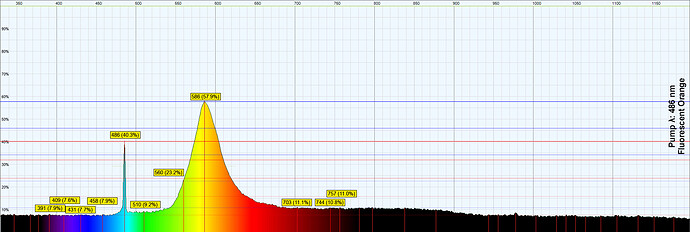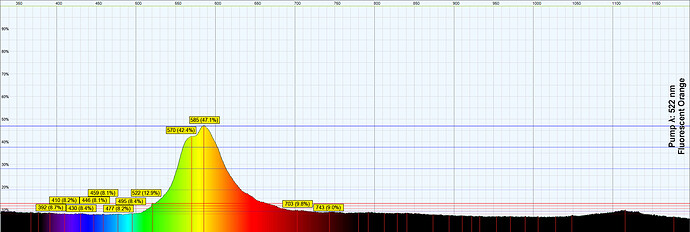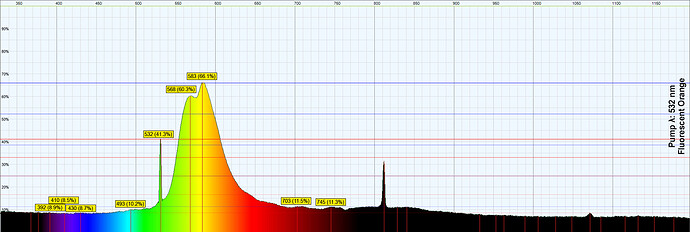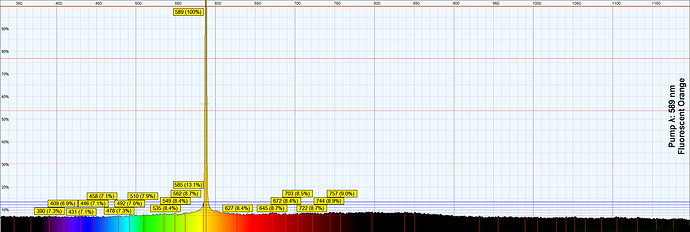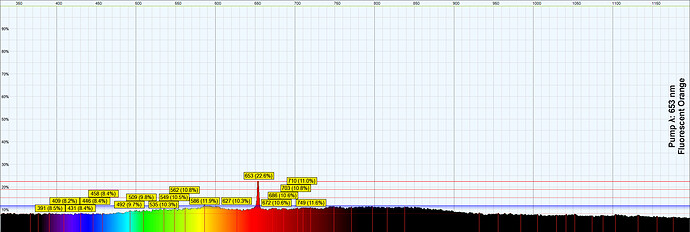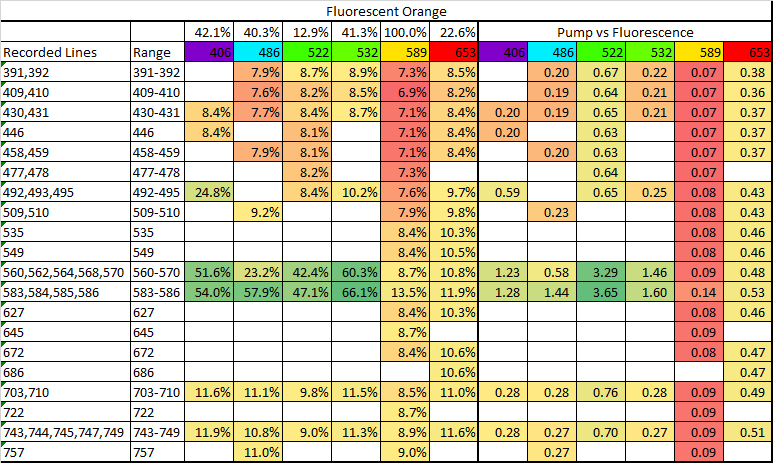Fluorescent Orange
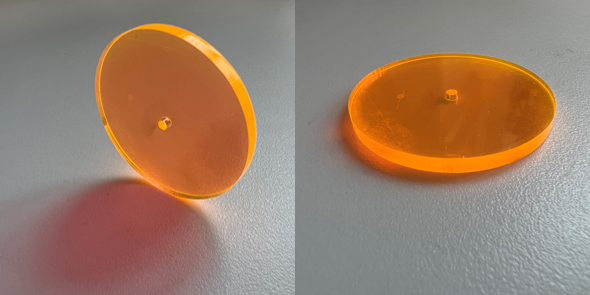
I feel like this sample has the most promise of lasing under a intense green pump. Followed closely by the previous Lava Orange sample. Notice how there is absorption at the green part of the spectrum. Interestingly absorption appears to be substantial at 522nm however even with the more intense 532nm input, the intensity of the output is significant. This plastic sample strongly emits yellow and lime-yellow photons. The lava orange sample will be best for yellow/orange output. A unexpected find however also occurred. Look closely at the spectrum pumped by 589nm. At first I thought it was insignificant. Not apparent emission visible. However there is a like output at around 584-5nm like the other spectrums. But it appears that pmma sample is a resonant almost with the 589nm input. A candidate for laser cooling?
Edit: Corrected Spectro image alignment
Relative Intensity Spectrums
Conclusion:
Fluorescent Orange has two dominant portions of the spectrum including 560-570nm and 583-586nm. This sample is best pumped by green wavelengths. 522nm being the best overall, whilst 532nm providing high peaks under intense pumping.
486nm seems to only produce strong 583-586nm lines as the 560-570nm peaks are eliminated. This sample cannot be expected to lase under 589nm or 653nm. The 589nm line is so strong that it appears Fluorescent Orange only absorbs and reemits. Barely any 585nm peak is present on the graph. As with the Lava Orange PMMA, longer wavelengths appear to produce more weak lines than can be achieved with shorter wavelengths. 406nm also performed well and may under intense pumping produce cyan (492-495) despite the lower than 100% yield.
